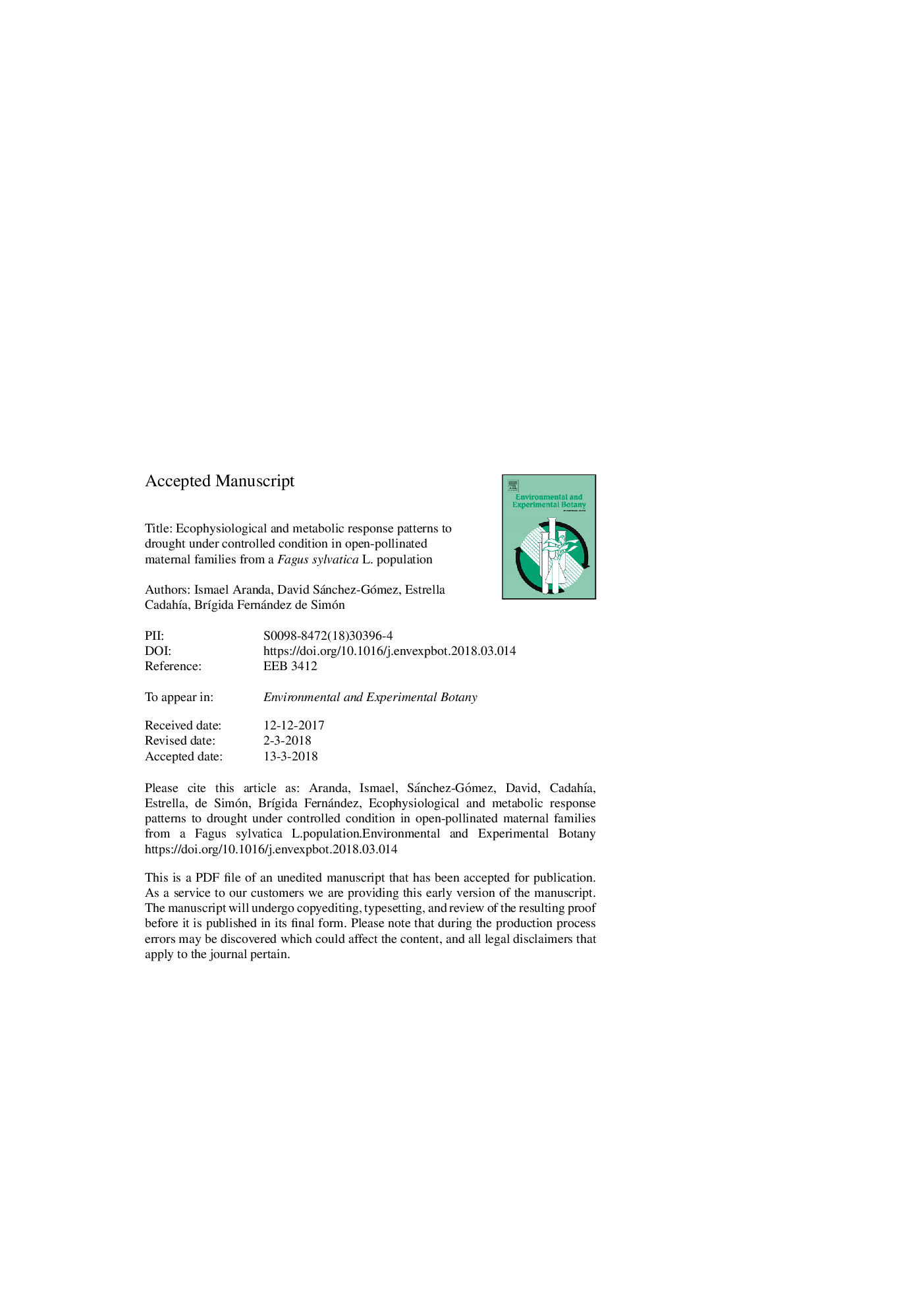| Article ID | Journal | Published Year | Pages | File Type |
|---|---|---|---|---|
| 8887013 | Environmental and Experimental Botany | 2018 | 41 Pages |
Abstract
The genetic variability within a plant species or population determines the extent to which drought impacts plant function at different levels of biological organization. By disentangling the extent to which drought tolerance is genetically determined within a population, we can get insights of the adaptive capacity of species to cope with climate change at the local scale. We compared the ecophysiological and leaf metabolic responses of different maternal families from a single population of the water-stress-sensitive species, Fagus sylvatica L, to an imposed drought in a controlled experiment. Nitrogen metabolism was modified by water stress, and some proteinogenic amino acids such as: proline (PRO), valine (VAL) and aspartic acid (ASP), as well as the non-proteinogenic amino-acid γ-aminobutyric (GABA), accumulated in response to drought. Gas exchange was depressed with increasing water deficit (i.e. a decrease in predawn water potential - Ψpd) in all families, with significant differences among maternal families for net photosynthesis (Anet) and stomatal conductance of water vapour (gwv). However increasing stomatal limitation of Anet did not reduce the pool of non-structural carbohydrates (NSC). In fact, under water stress NSCs, including both mono- and disaccharides, accumulated as leaf Ψpd decreased; with the most striking effect of water stress being an increase in the trisaccharide raffinose (RAF) in all the maternal families. Leaf secondary metabolites were also affected differently by water stress among the maternal families. Overall, there were differential changes among our maternal families in various leaf metabolites, in seedlings under both the well-watered and water-stressed treatments. This result supports the hypothesis that there is a high degree of intra-population variability in the response to drought at different levels of biological organization in beech, i.e. ranging from ecophysiological to metabolic responses. This intra-population genetic variability is fundamental for adaptation of the species to drier environments at its trailing range edge in a context of climate change.
Related Topics
Life Sciences
Agricultural and Biological Sciences
Ecology, Evolution, Behavior and Systematics
Authors
Ismael Aranda, David Sánchez-Gómez, Estrella CadahÃa, BrÃgida Fernández de Simón,
